Here is your very own justice “must read” book list
You blew us away with these great suggestions. Thank you!
Wow! Who knew that the OneJustice network is filled chock-a-block with book worms?
You all rocked this month’s contest, with over 40 submissions and 35 book suggestions. Below is your very own justice book club reading list. Enjoy!
Thank you so much – and you made it really hard to choose a winner! But we had to do it – and so we’re delighted to announce that we have tie. Congratulations to Ugochi Anaebere-Nicholson, Managing Attorney of Indio Branch Office of Inland Counties Legal Services, and to Betsy Cavendish, President of Appleseed – they both submitted the winning title: The Buffalo Creek Disaster by Gerald M. Stern. Enjoy those OneJustice water bottles!
Enjoy those OneJustice water bottles!
And YOU can give the gift of justice this season – through Amazon Smile. These terrific books will also make great gifts for the folks on your list. And if you will be doing some holiday shopping online with Amazon, you can also give the gift of justice by registering with Amazon Smile and designating OneJustice as your nonprofit! The AmazonSmile Foundation will then donate 0.5% of the purchase price from your eligible AmazonSmile purchases to OneJustice.
Thank you for signing up to give the gift of justice to Californians in need – just by doing your holiday shopping!
———————————————————————————————–
The OneJustice Network Book Club Reading List
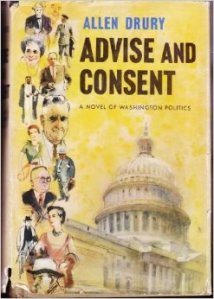 Advise and Consent by Allen Drury A 1959 Pulitzer Prize-winning political novel, later made into a movie, about Senate confirmation hearings for Secretary of State for a nominee who is a former member of the Communist Party. The Senator heading the confirmation subcommittee, while under pressure to move the nomination to the forward, is discovered to have a homosexual past and commits suicide rather than face exposure.
Advise and Consent by Allen Drury A 1959 Pulitzer Prize-winning political novel, later made into a movie, about Senate confirmation hearings for Secretary of State for a nominee who is a former member of the Communist Party. The Senator heading the confirmation subcommittee, while under pressure to move the nomination to the forward, is discovered to have a homosexual past and commits suicide rather than face exposure.
America is In the Heart: A Personal History by Carlos Bulosan First published in 1946, this autobiography of the well-known Filipino poet describes his boyhood in the Philippines, his voyage to America, and his years of hardship and despair as an itinerant laborer following the harvest trail in the rural West.
Anil’s Ghost by Michael Ondaatje Anil’s Ghost transports us to Sri Lanka, a country steeped in centuries of tradition, now forced into the late twentieth century by the ravages of civil war. Into this maelstrom steps Anil Tissera, a young woman born in Sri Lanka, educated in England and America, who returns to her homeland as a forensic anthropologist sent by an international human rights group to discover the source of the organized campaigns of murder engulfing the island.
Anne Frank: The Diary of a Young Girl by Anne Frank Anne Frank’s remarkable diary has since become a world classic—a powerful reminder of the horrors of war and an eloquent testament to the human spirit. In 1942, with Nazis occupying Holland, Anne and her family fled their home in Amsterdam and went into hiding. For the next two years, until their whereabouts were betrayed to the Gestapo, they and another family lived cloistered in the “Secret Annex” of an old office building.
Atlas Shrugged by Ayn Rand Atlas Shrugged is the astounding story of a man who said that he would stop the motor of the world–and did. Tremendous in scope, breathtaking in its suspense, Atlas Shrugged stretches the boundaries further than any book you have ever read. It is a mystery, not about the murder of a man’s body, but about the murder–and rebirth–of man’s spirit.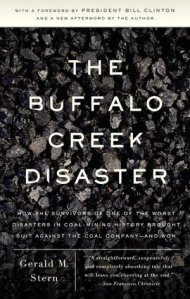
Black Hills/White Justice: The Sioux Nation versus the United States, 1775 to the Present by Edward Lazarus Black Hills/White Justice tells of the longest active legal battle in United States history: the century-long effort by the Sioux nations to receive compensation for the seizure of the Black Hills. Edward Lazarus, son of one of the lawyers involved in the case, traces the tangled web of laws, wars, and treaties that led to the wresting of the Black Hills from the Sioux and their subsequent efforts to receive compensation for the loss.
A Civil Action by Jonathan Harr In this true story of an epic courtroom showdown, two of the nation’s largest corporations stand accused of causing the deaths of children. Representing the bereaved parents, the unlikeliest of heroes emerges: a young lawyer who hopes to win millions of dollars and ends up nearly losing everything. A searing, compelling tale of a legal system gone awry – one in which greed and power fight an unending struggle against justice – A Civil Action is also the story of how one determined man can ultimately make a difference.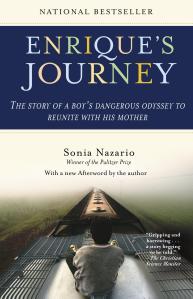
Enrique’s Journey by Sonia Nazario This astonishing true story recounts the unforgettable odyssey of a Honduran boy who braves unimaginable hardship to reach his mother in the United States. Based on the Los Angeles Times series that won two Pulitzer Prizes, Enrique’s Journey is the timeless story of families torn apart, the yearning to be together again, and a boy who will risk his life to find the mother he loves.
The Feminine Mystique by Betty Friedan Landmark, groundbreaking, classic—these adjectives barely describe the earthshaking and long-lasting effects of Betty Friedan’s The Feminine Mystique. This is the book that defined “the problem that has no name,” that launched the Second Wave of the feminist movement, and has been awakening women and men with its insights into social relations, which still remain fresh, ever since.
Gideon’s Trumpet by Anthony Lewis This history of the landmark case of James Earl Gideon’s fight for the right to legal counsel describes the story behind Gideon v. Wainwright, in which the Supreme Court of the United States ruled that criminal defendants have the right to an attorney even if they cannot afford it.
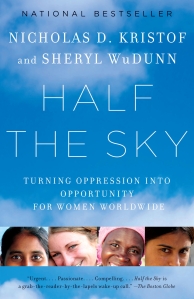 Half the Sky by Nicholas D. Kristof and Sheryl WuDunn This is passionate call to arms against our era’s most pervasive human rights violation: the oppression of women and girls in the developing world. We undertake an odyssey through Africa and Asia to meet the extraordinary women struggling there. Drawing on the breadth of their combined reporting experience, Kristof and WuDunn depict our world with anger, sadness, clarity, and, ultimately, hope.
Half the Sky by Nicholas D. Kristof and Sheryl WuDunn This is passionate call to arms against our era’s most pervasive human rights violation: the oppression of women and girls in the developing world. We undertake an odyssey through Africa and Asia to meet the extraordinary women struggling there. Drawing on the breadth of their combined reporting experience, Kristof and WuDunn depict our world with anger, sadness, clarity, and, ultimately, hope.Hunger Games Trilogy by Suzanne Collins In the ruins of a place once known as North America lies the nation of Panem, a shining Capitol surrounded by twelve outlying districts. The Capitol is harsh and cruel and keeps the districts in line by forcing them all to send one boy and one girl between the ages of twelve and eighteen to participate in the annual Hunger Games, a fight to the death on live TV. Sixteen-year-old Katniss Everdeen launches a rebellion when she represents her district and wins.
In Cold Blood by Truman Capote In November 1959, in the small town of Holcomb, Kansas, four members of the Clutter family were savagely murdered by blasts from a shotgun held a few inches from their faces. There was no apparent motive for the crime, and there were almost no clues. As Truman Capote reconstructs the murder and the investigation that led to the capture, trial, and execution of the killers, he generates mesmerizing suspense, astonishing empathy, and poignant insights into the nature of American violence.
Indian Killer by Sherman Alexie A Seattle serial murderer has been dubbed “the Indian Killer” because he scalps his victims and adorns their bodies with owl feathers. As the city consumes itself in a nightmare frenzy of racial tension, a possible suspect emerges: John Smith. An Indian raised by whites, John is lost between cultures. He fights for a sense of belonging that may never be his—but has his alienation made him angry enough to kill? This national bestseller and New York Times Notable Book delivers both a scintillating thriller and a searing parable of race, identity, and violence.
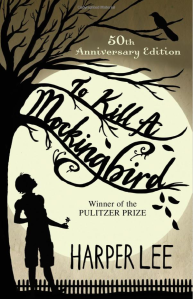 To Kill a Mockingbird by Harper Lee The unforgettable novel of a childhood in a sleepy Southern town and the crisis of conscience that rocked it, To Kill A Mockingbird became both an instant bestseller and a critical success when it was first published in 1960. It went on to win the Pulitzer Prize in 1961 and was later made into an Academy Award-winning film, also a classic.
To Kill a Mockingbird by Harper Lee The unforgettable novel of a childhood in a sleepy Southern town and the crisis of conscience that rocked it, To Kill A Mockingbird became both an instant bestseller and a critical success when it was first published in 1960. It went on to win the Pulitzer Prize in 1961 and was later made into an Academy Award-winning film, also a classic.
The Language of Flowers by Vanessa Diffenbaugh The Victorian language of flowers was used to convey romantic expressions: honeysuckle for devotion, asters for patience, and red roses for love. But for Victoria Jones, it’s been more useful in communicating mistrust and solitude. After a childhood spent in the foster-care system, she is unable to get close to anybody, and her only connection to the world is through flowers and their meanings. When she’s forced to confront a painful secret from her past, she must decide whether it’s worth risking everything for a second chance at happiness.
Learning Tree by Gordon Parks Photographer, writer, and composer, Gordon Parks has written a moving, true-to-life novel of growing up as a black man in this country in this century. Hailed by critics and readers alike, the Learning Tree tells the extraordinary journey of a family as they struggle to understand the world around them and leave their mark a world that is better for their having been in it.
A Lesson Before Dying by Ernest J. Gaines In a small Cajun community in the late 1940s, Jefferson, a young black man, is an unwitting party to a liquor store shoot out in which three men are killed; the only survivor, he is convicted of murder and sentenced to death. Grant Wiggins, who left his hometown for the university, has returned to the plantation school to teach. As he struggles with his decision whether to stay, his aunt and Jefferson’s godmother persuade him to visit Jefferson in his cell before his death. In the end, the two men forge a bond as they both come to understand the simple heroism of resisting—and defying—the expected.
Native Son by Richard Wright Right from the start, Bigger Thomas had been headed for jail. Native Son tells the story of this young black man caught in a downward spiral after he kills a young white woman in a brief moment of panic. Set in Chicago in the 1930s, Wright’s powerful novel is an unsparing reflection on the poverty and feelings of hopelessness experienced by people in inner cities across the country and of what it means to be black in America.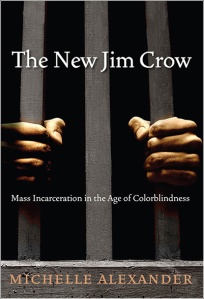
The New Jim Crow: Mass Incarceration in the Age of Colorblindness by Michelle Alexander With dazzling candor, legal scholar Michelle Alexander argues that by targeting black men through the War on Drugs and decimating communities of color, the U.S. criminal justice system functions as a contemporary system of racial control—relegating millions to a permanent second-class status—even as it formally adheres to the principle of colorblindness.
Parting the Waters: America in the King Years 1954-63 by Taylor Branch Moving from the fiery political baptism of Martin Luther King, Jr., to the corridors of Camelot where the Kennedy brothers weighed demands for justice against the deceptions of J. Edgar Hoover, here is a vivid tapestry of America, torn and finally transformed by a revolutionary struggle unequaled since the Civil War.
The Poisonwood Bible by Barbara Kingsolver This is a story told by the wife and four daughters of Nathan Price, a fierce, evangelical Baptist who takes his family and mission to the Belgian Congo in 1959. What follows is a suspenseful epic of one family’s tragic undoing and remarkable reconstruction over the course of three decades in post colonial Africa.
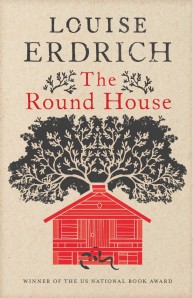 The Round House by Louise Erdrich One of the most revered novelists of our time—a brilliant chronicler of Native-American life—Louise Erdrich transports readers to the Ojibwe reservation in North Dakota. This is an exquisitely told story of a boy on the cusp of manhood who seeks justice and understanding in the wake of a terrible crime that upends and forever transforms his family.
The Round House by Louise Erdrich One of the most revered novelists of our time—a brilliant chronicler of Native-American life—Louise Erdrich transports readers to the Ojibwe reservation in North Dakota. This is an exquisitely told story of a boy on the cusp of manhood who seeks justice and understanding in the wake of a terrible crime that upends and forever transforms his family.
Savage Inequalities: Children in America’s Schools by Jonathan Kozol For two years, beginning in 1988, Jonathan Kozol visited schools in neighborhoods across the country, speaking with teachers, principals, superintendents, and, most important, children. What he found was devastating. Not only were schools for rich and poor blatantly unequal, the gulf between the two extremes was widening—and it has widened since. Kozol delivers a searing examination of the extremes of wealth and poverty and calls into question the reality of equal opportunity in our nation’s schools.
Slaughterhouse-Five by Kurt Vonnegut Kurt Vonnegut’s absurdist classic Slaughterhouse-Five introduces us to Billy Pilgrim, a man who becomes unstuck in time. We follow Pilgrim simultaneously through all phases of his life, concentrating on his (and Vonnegut’s) shattering experience as an American prisoner of war who witnesses the firebombing of Dresden. Slaughterhouse-Five (taken from the name of the building where the POWs were held) fashions the author’s experiences in the Second World War into an eloquent and deeply funny plea against butchery in the service of authority.
Soledad Brother: The Prison Letters of George Jackson by George Jackson This collection of Jackson’s letters from prison is an outspoken condemnation of the racism of white America and a powerful appraisal of the prison system that failed to break his spirit but eventually took his life. Jackson’s letters make palpable the intense feelings of anger and rebellion that filled black men in America’s prisons in the 1960s. Jackson’s story resonates for its portrait of a man taking a stand even while locked down.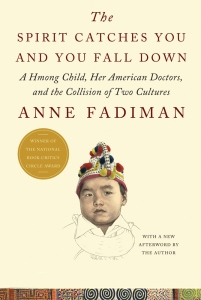
The Spirit Catches You and You Fall Down: A Hmong Child, Her American Doctors, and the Collision of Two Cultures Paperback by Anne Fadiman The Spirit Catches You and You Fall Down explores the clash between a small county hospital in California and a refugee family from Laos over the care of Lia Lee, a Hmong child diagnosed with severe epilepsy. Lia’s parents and her doctors both wanted what was best for Lia, but the lack of understanding between them led to tragedy.
The Stranger by Albert Camus A young Algerian, afflicted with a sort of aimless inertia, becomes embroiled in the petty intrigues of a local pimp and, somewhat inexplicably, ends up killing a man. Once he’s imprisoned and eventually brought to trial, his crime, it becomes apparent, is not so much the arguably defensible murder he has committed as it is his deficient character. The trial’s proceedings are absurd, a parsing of incidental trivialities, so that the eventual sentence the jury issues is both ridiculous and inevitable.
Triangle: The Fire That Changed America by David von Drehle Triangle is a poignantly detailed account of the 1911 disaster that horrified the country a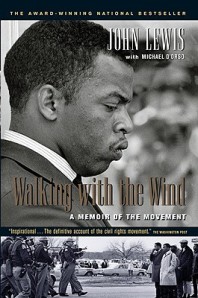 nd changed the course of twentieth-century politics and labor relations. On March 25, 1911, as workers were getting ready to leave for the day, a fire broke out in the Triangle shirtwaist factory in New York’s Greenwich Village. The final toll was 146 people—123 of them women. Triangle is an immensely moving account of the hardships of New York City life in the early part of the twentieth century, and how this event transformed politics and gave rise to urban liberalism.
nd changed the course of twentieth-century politics and labor relations. On March 25, 1911, as workers were getting ready to leave for the day, a fire broke out in the Triangle shirtwaist factory in New York’s Greenwich Village. The final toll was 146 people—123 of them women. Triangle is an immensely moving account of the hardships of New York City life in the early part of the twentieth century, and how this event transformed politics and gave rise to urban liberalism.
Walking with the Wind: A Memoir of the Movement by John Lewis and Michael D’Orso As Chairman of the Student Nonviolent Coordinating Committee, Congressman John Lewis was at the epicenter of the civil rights movement in the late ’50s and ’60s. Arrested more than forty times, he was one of its youngest and most courageous leaders. Writing with charm, warmth, and honesty, Lewis moves from the Nashville lunch counter sit-ins as he reflects on the era to the Edmund Pettus Bridge in Selma, Alabama, where he led more than five hundred marchers on what became known as “Bloody Sunday.”
Women, Race, & Class by Angela Y. Davis Longtime activist, author and political figure Angela Davis brings us this expose of the women’s movement in the context of the fight for civil rights and working class issues. She uncovers a side of the fight for suffrage many of us have not heard: the intimate tie between the anti-slavery campaign and the struggle for women’s suffrage. She shows how the racist and classist bias of some in the women’s movement have divided its own membership.